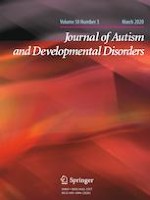06-12-2019 | Original Paper
EEG Spectral Features in Sleep of Autism Spectrum Disorders in Children with Tuberous Sclerosis Complex
Gepubliceerd in: Journal of Autism and Developmental Disorders | Uitgave 3/2020
Log in om toegang te krijgenAbstract
Tuberous sclerosis complex (TSC) is a multisystem disorder with increased prevalence of autism spectrum disorders (ASDs). This project aimed to characterize the autism phenotype of TSC and identify biomarkers of risk for ASD. Because abnormalities of EEG during sleep are tied to neurodevelopment in children, we compared electroencephalographic (EEG) measures during Stage II sleep in TSC children who either did (ASD+) or did not (ASD−) exhibit symptoms of ASD over 36-month follow up. Relative alpha band power was significantly elevated in the ASD+ group at 24 months of age with smaller differences at younger ages, suggesting this may arise from differences in brain development. These findings suggest that EEG features could enhance the detection of risk for ASD.
